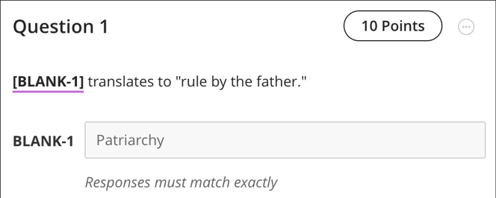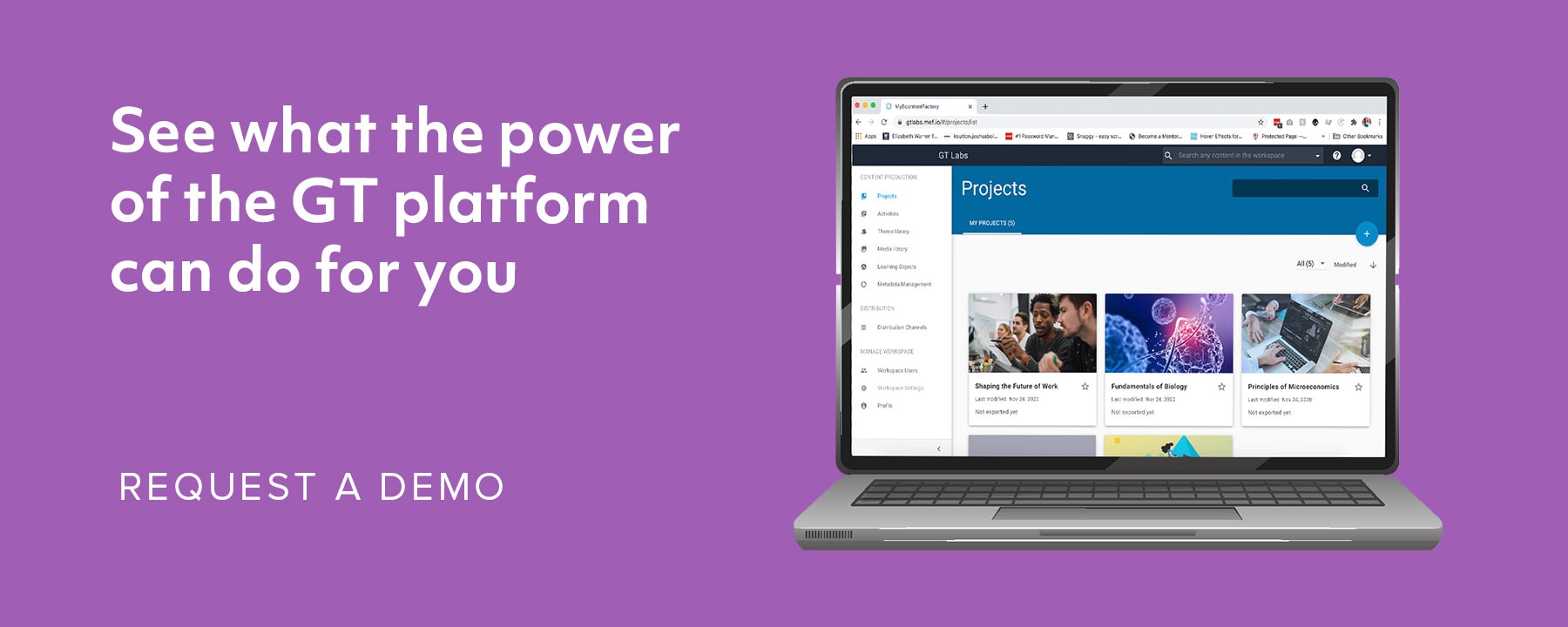
The cartoon might be funny, but it does have a point. It is not easy to develop quality assessments that test the learner’s knowledge and not just his ability to take a test. Learning designers really need to pay attention to how the learners are performing on every individual testing item. There are several kinds of question format that can be used, one most prevalent fill-in-the-blank-type.
What are Fill-In-The-Blank-Type Questions?
These are questions that may contain a sentence or even a paragraph with a blank space. This space represents a word, number, symbol, or maybe a phrase that the designer has left out on purpose. The learner is required to fill in this blank. They are expected to know the exact word or phrase in order to get the answer correct.

When Can you Use These Questions?
Fill-in-the-blank-type questions test the recall power of learners and not their ability to recognize or synthesize. Use them for situations where you want the learners to supply the answer based on how much they can remember.
It is important that the questions have only one accurate answer. And, the answer should be present in the learning materials. The basic aim of this format is to encourage learners to apply the knowledge they have already learned. So, they must have access to the source materials before they are asked to answer the question.
Top Five Guidelines to Keep in Mind While Creating Fill-In-The-Blank-Type Questions
These questions may look easy to create, but you need to put in some thoughts before rolling them out. Here are a few tips that you can keep in mind for writing the questions.
#1: Keep it simple
Simple is always good, well most of the times. You want to test how much your learners have understood the concepts. They just need to come up with the correct answer for the blank provided. Don’t confuse them with complex words and sentences. Also, provide them with clear instructions on what you are looking for. Mention which topic or process you are referring to, instead of making them guess.
#2: Use the blank space wisely
The sentence should make sense even without the term that is supposed to fill up the blank. Your learners should be able to derive the right answer from the sentence provided. Ideally, you should leave out keywords for the blank space.
#3: Keep the answers brief
There should be only one right answer for the blank. But, at times similar phrases can also fit in. So, you may need more than one round of review to refine the question in a way that there is only one answer that fits it. Also, make sure that your answers are short. The responses should not be complex. Limit the blanks to a maximum of two per question.
#4: Don’t give out clues
After spending time and effort in creating effective questions, you surely wouldn’t want to give out clues to the learners. A simple way to ensure that is to keep the length of the blanks consistent. Do not vary it based on the length of the answers. Learners are smart. If you vary the length, they will certainly look for terms of that length and fill in. Surely you do not want to test their search capabilities.
#5: Test it
It is a good idea to test the efficacy of your questions. Since you would have looked at the questions many times, you need a fresh pair of eyes to test it. Ask a peer or someone from the target audience to take the assessment. Ask them for relevant feedback. If you see that you are getting responses that are different from the correct option, then you need to revise the question.
Armed with the tips above, you are sure to excel in creating effective Fill-in-the-blank-type assessments to gauge the knowledge of your learners.
You caneasily create courseware and use these microlearning design tips using MyEcontentFactory. Our authoring tool allows you to import content, media, and assessments, make real-time changes and collaborate with your colleagues.







Leave a comment